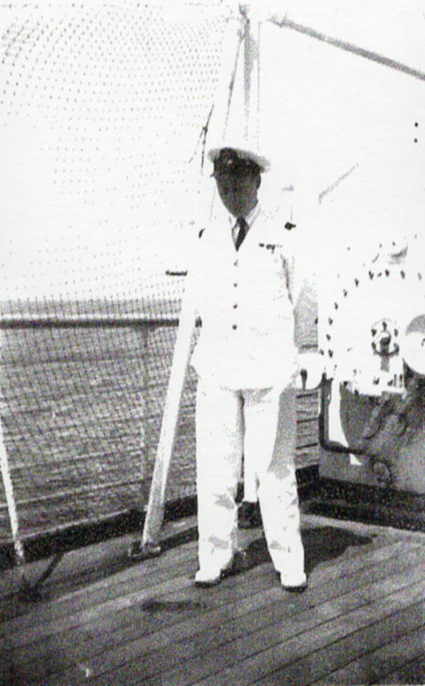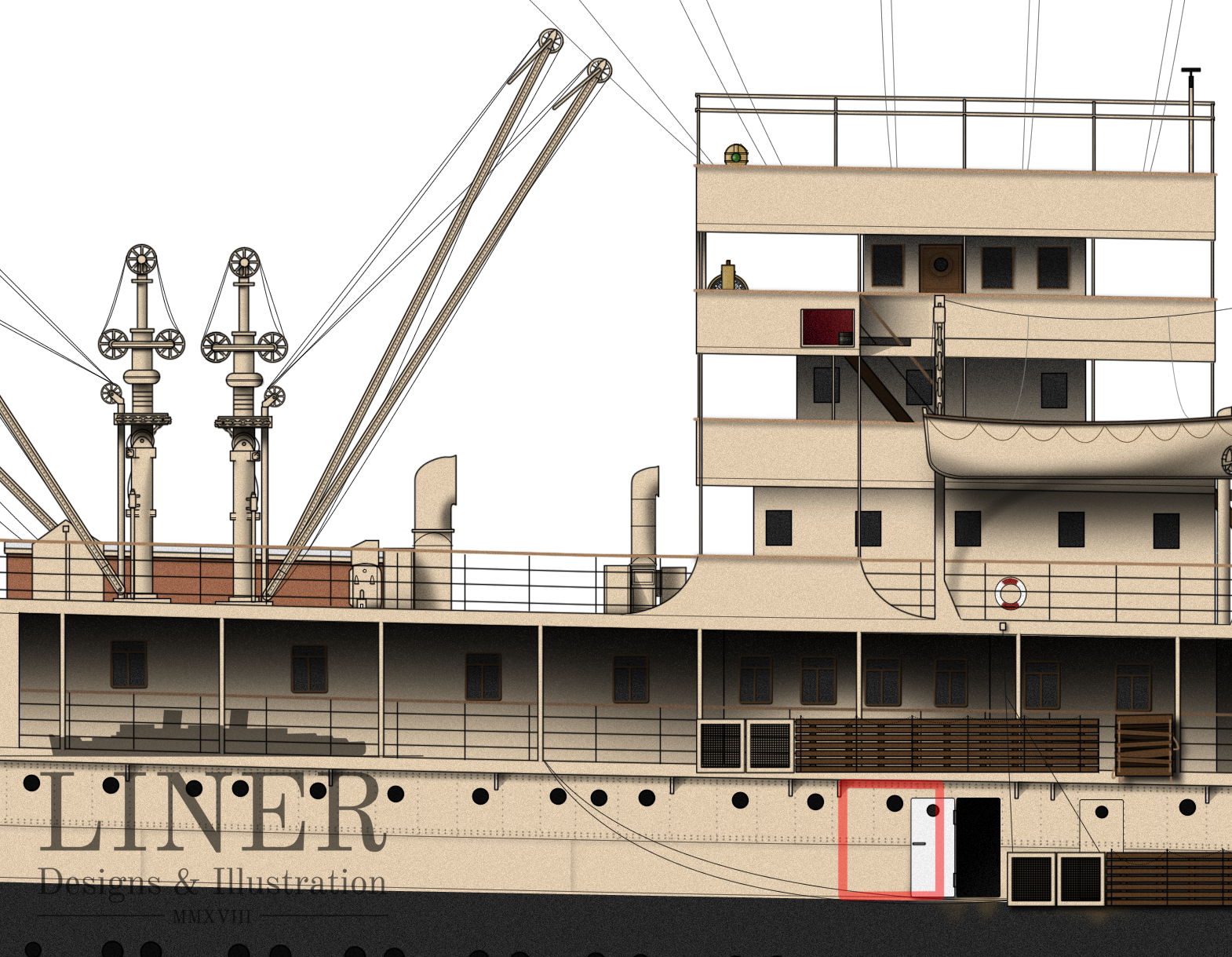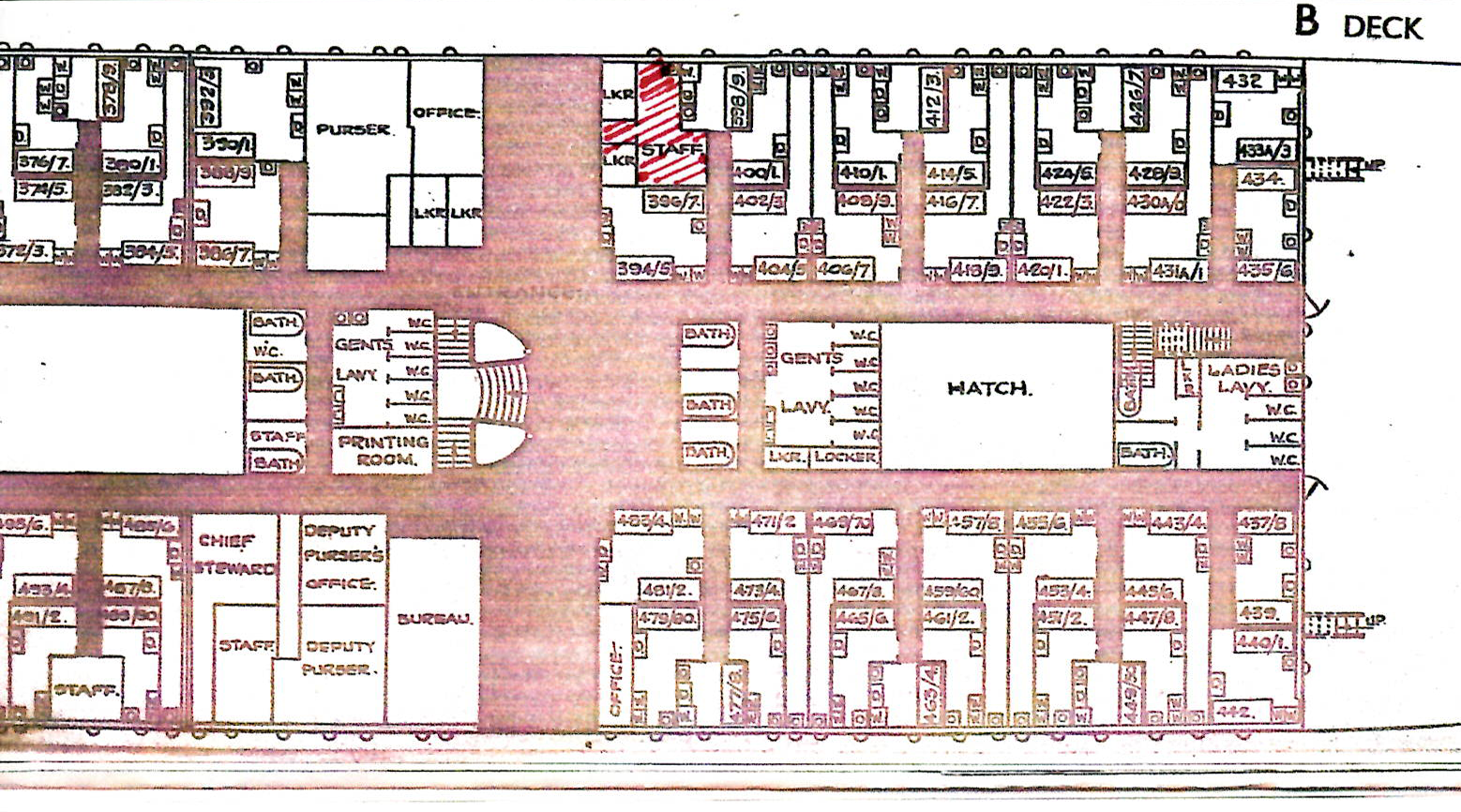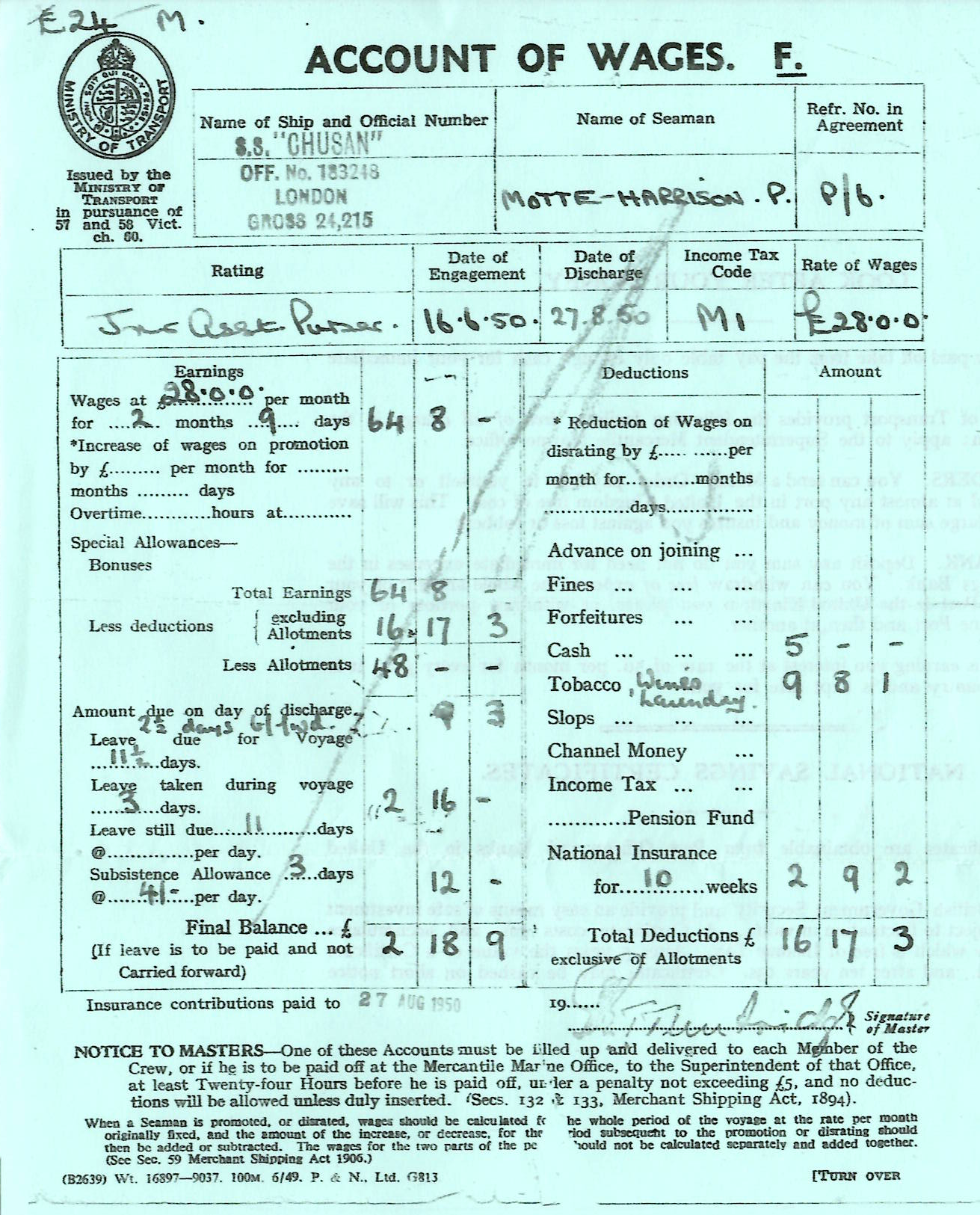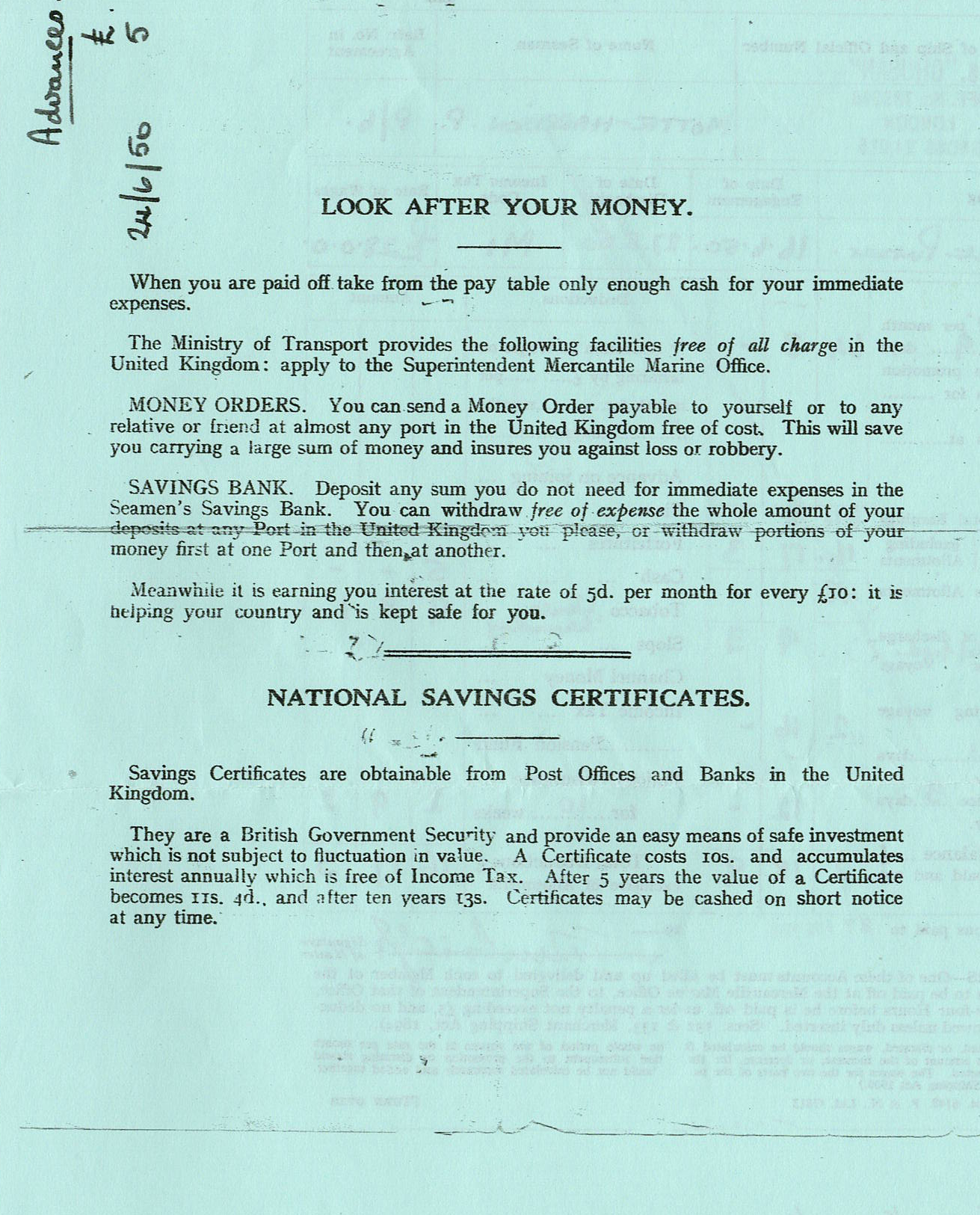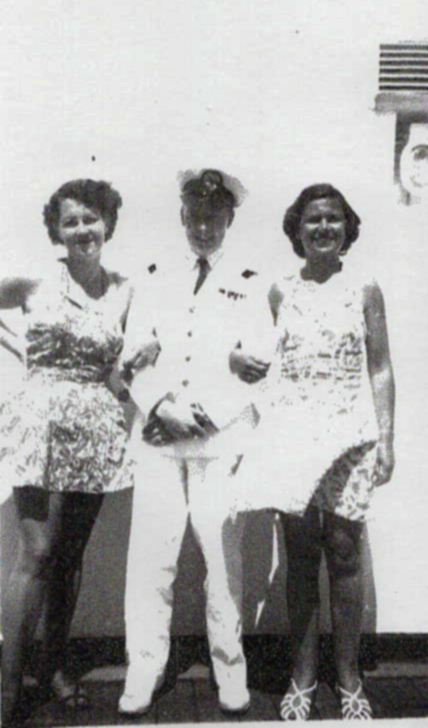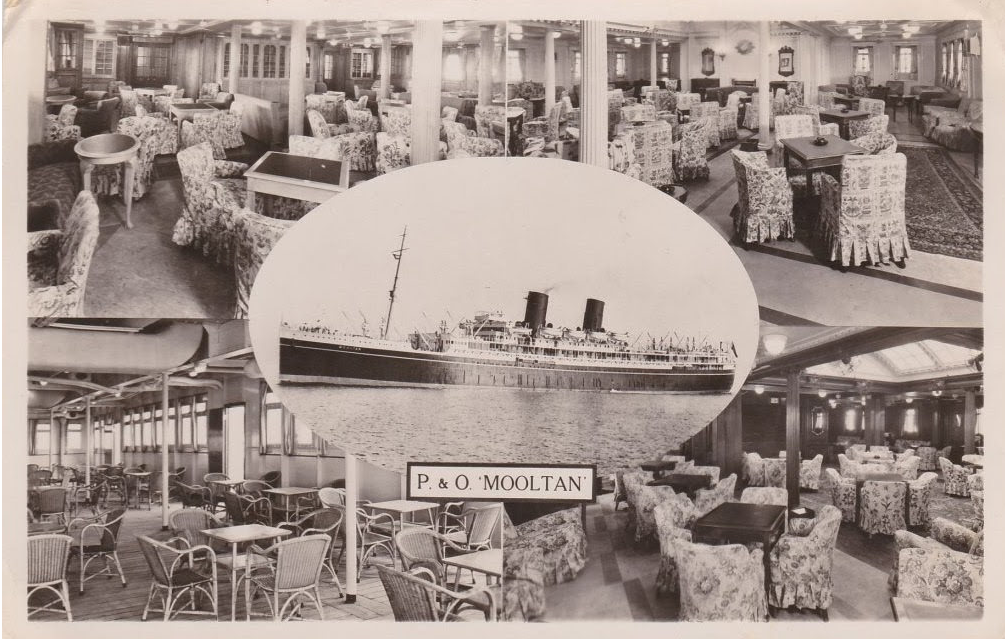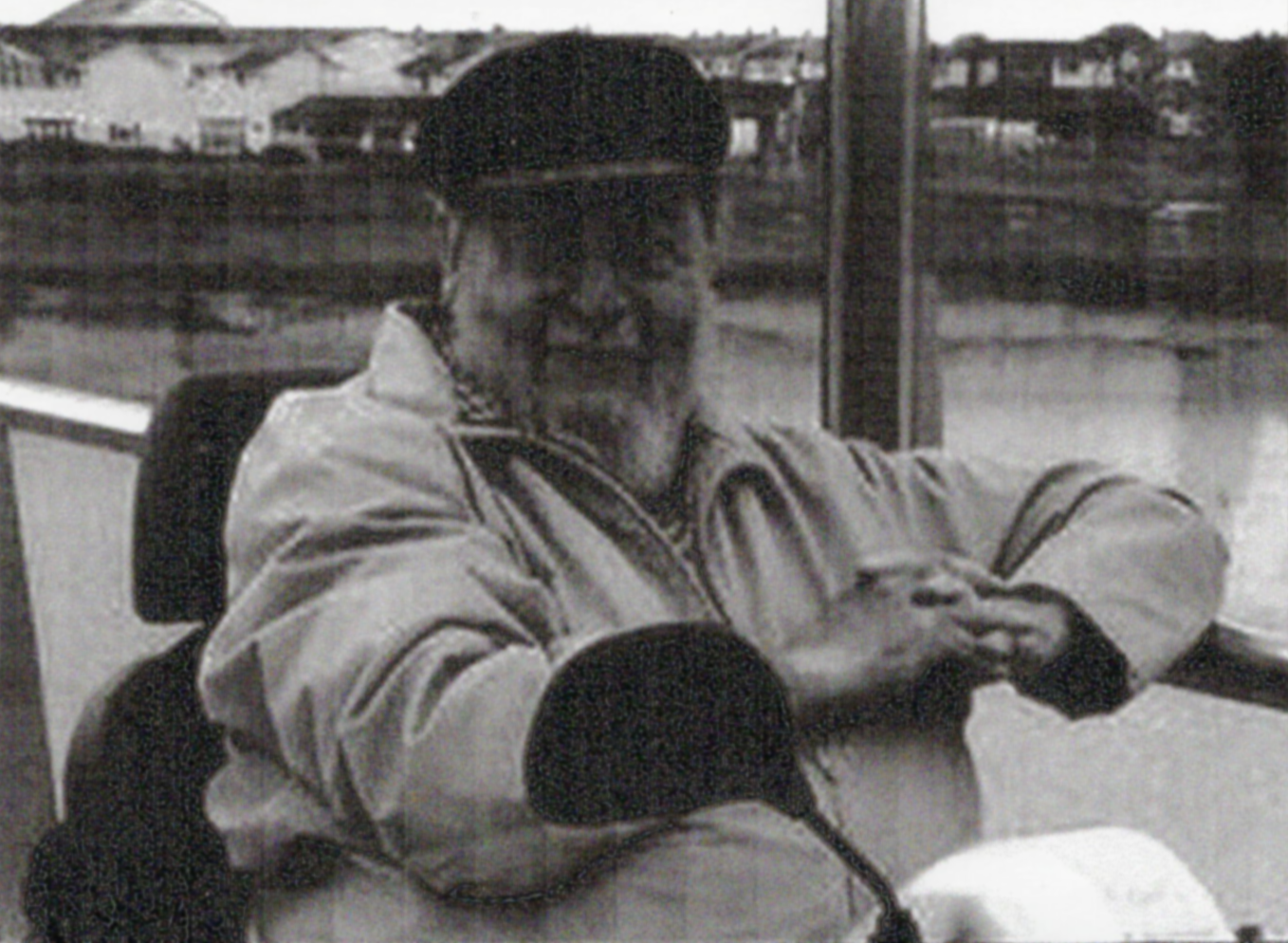Behind the Purser's Desk
LIFE AT SEA WITH
PAUL MOTTE-HARRISON
By Michael Brady
If the beating heart of a ship is its engine room then the Purser’s Office is its nervous system, connecting the various departments and ensuring smooth operation. A skilled and talented purser is a necessity, not just for dealing with passengers’ requests - which as you will soon read can range from the mundane to the bizarre - but in ensuring the crew remains paid and subsequently in good spirits. This is made all the more easier today thanks to computers and databases but in the Golden Days of the Ocean Liner things were done in a very manual way.
Paul Motte-Harrison is an extraordinary gentleman; a veteran of the Second World War and a former crewman from some truly unique ships. He is a living link to history and it is remarkable that he possesses a penchant for remembering details and - most importantly of all- a good sense of humour. In this way he can give us a fascinating glimpse at life behind the Purser’s desk.
Above: Paul looking smart in his P&O summer whites.
Paul, whose full surname is de la Motte-Harrison, was born in England in the 1920s and was completing his schooling in Brighton when war was declared. Not quite fancying a future career in accounting, he opted instead to join the Royal Navy just after his 18th birthday. Initially he trained as a telegraphist, then an electrical mechanic before finally being transferred to Landing Craft - those specialist vehicles designed to beach themselves and quickly offload troops, vehicles and supplies. Paul notes that this is somewhat ironic when one considers he had joined the Royal Navy with hopes to avoid recruitment by the land-based Army!
The Landing Craft’s finest hour was undoubtedly Operation Overlord, the invasion of Nazi-occupied France in June 1944 and Paul was there serving as a a Sub/Lieutenant aboard LCT 7069 - a craft designed to carry and offload tanks. Two weeks after the D-Day Landings, on June 17, the LCT was caught up in rough weather and before long breaking waves had overcome the pumps required for bailing the sea from out of the vessel. Taking on water quickly, LCT 7069 foundered and Paul, along with the rest of the crew, were forced to swim ashore with the aid of a flotation device. This was not the end of Paul’s naval career however; he would go on to join another LCT for deployment in the Far East - Java and Indonesia. He was eventually de-mobbed in 1946.
Above: An early model LCT unloading a British tank in 1942. Photograph from the Imperial War Museum, London.
Work in post-war Britain was a fairly uncertain prospect in those dark days and the devastatingly harsh winter of 1946-1947 only worsened the situation; many veterans were forced to work menial jobs merely to survive. Paul found himself employed as an Assistant Kennel Manager at a new greyhound stud before becoming a farm hand, even sitting an exam to become an Artificial Inseminator of cattle (although Paul notes that this effort was unsuccessful!) It was in 1949 that Paul made an immense decision and joined one of Britain’s premiere shipping lines - P&O. I asked Paul what drew him to do this and he simply replied; “My love for that most demanding of mistresses, the sea - and a recruiting advert.” It must have been some recruiting advert!
Above: Paul’s second P&O vessel ‘Canton’, a popular pre-war ship which he joined in 1951. Illustration by Liner Designs - learn more.
Perhaps displaying keen organisation skills, Paul was appointed Junior Assistant Purser and spent relatively brief spells at sea. First it was P&O’s beautiful new ‘Chusan’ in May 1950 -which Paul recalls as being relatively luxurious (although interestingly he notes that few cabins were en-suite.) Then in September 1951 it was ‘Canton’, a popular liner operating the Far-East ‘run’ which had been launched before the war and seen active duty as an armed merchant cruiser. It was his third ship ‘Mooltan’, however, that Paul remembers the most fondly.
Once known as the ‘Ship of a Thousand Romances’, Mooltan was by now in the twilight of her years. In the 20s and 30s she had originally operated a popular line service to Australia via India and, occasionally, cruises to the Far-East but had been relegated to emigrant-carrying duties after a post-War refit that had seen her converted in a Single-Class Ship. By 1952 Mooltan was 30 years old and her quadruple-expansion steam engines, black steel-plated hull and twin elliptical funnels were relics of a bygone-era. Paul joined the ship in October 1952 as Senior Assistant Purser and found himself berthed in a curious 9-sided cabin on B-Deck - only a short stroll across the main Entrance from his chief workplace, the Purser’s Office.
Above: P&O’s elegant - if slightly outmoded - Mooltan, a relic of a bygone era of ocean travel and a vessel which Paul remembers with fondness. Illustration by Liner Designs - learn more.
I asked Paul what state Mooltan was in after having been at sea for nearly 30 years and the answer surprised me; “Reasonable. Comfortable, ‘slowish’, pretty steady and in fair order.”
“She was a great ship, very steady in bad weather and still with most of her original ornate fittings and panelling. Like most pre-war passenger ships she had lost some of her glamour when stripped for trooping duties, but proudly bore a brass plate recording those duties...”
As for that unusual cabin? Amenities were sparse; a single porthole, bunk, wardrobe and bulkhead cupboard. In Paul’s own words, “Moderately cramped, but acceptable .” Enquiring on his accommodation I accidentally betrayed my background as a ‘landlubber’ when I referred to the cabin’s ‘walls’. He gently, and quite correctly, reprimanded me; “Buildings have walls, ships have bulkheads!”
Above: Paul’s curious 9-sided cabin on board Mooltan (circled in red, left, and shaded red, right) was just across the hall from the Purser’s Office.
Paul explains the nature of his work; “My work as a Senior Assistant Purser kept me in constant touch with the passengers at every stage of the voyage, from the moment of embarkation to the final departure over the side at the other end of the world.”
The sheer variety of duties expected of the Purser and his Assistants is astounding. Elaborating on his day-to-day role in the operation of the ship, Paul explained;
“My duties included being able to advise and direct the passengers in any matter relating to their stay in the ship, accommodation, money, postage, passports, landing documents, accounts and entertainment.”
“Before opening the Bureau to passengers on each voyage-day, we’d collect that day’s news bulletin from the radio room and run off copies (on a hand-operated Gestetner duplicator)for all passenger cabins, crew messes and individual officers. We kept the Bureau manned until ‘six-ish’ (can’t remember actual times) but remained open until late if the ship was in port. During these open hours we dealt with passengers’ enquiries, cashed travellers cheques and sold postage stamps for the country of the next or current port-of-call.”
“We had to complete, by hand, an alphabetically indexed list of all the passengers. We maintained Portage Bills for both European and Asian crews which noted daily pay and deductions, and which was only finalised on the night (repeat NIGHT) prior to arrival London or Bombay respectively. With the Portage Bills went the individual (hand-completed) pay slips, each detailing all pay and deductions for the voyage.”
“Passenger landing passes, for most ports of call, had to be hand-written and stamped. We ran the tote on horse-racing nights, provided items for passengers making up fancy dress costumes. We were on call 24 hours per day, we were kept pretty busy, and all for £30.00 per month pay!”
“At the end of one voyage, London was choked by a heavy smog. We were forced to anchor in the Thames estuary for two nights, and the Portage Bills and Pay slips had to be amended accordingly!”
Above: A form with which Paul became intimately acquainted; the Account of Wages. One had to be made out, by hand, for every member of the ship’s 300-600 crew for each ‘period of engagement’. Document supplied by Paul Motte-Harrison.
“The first day out on a voyage was a general ‘settling-in time’, and the first morning at sea was the only time in the voyage that one would expect to see all the off-duty officers strolling the passenger decks BEFORE breakfast! This limited exercise was known amongst them as ‘Surveying the Field’ - the reason being obvious.”
“It was quite extraordinary to note how, after the first day, people’s natural reserve and inhibitions broke down and anybody would talk to anybody. The sequence of events following one’s first introduction to the passengers at table was to join them for coffee and drinks after dinner in the Smoking Room or Lounge. One then met their friends and so, in a very short time, a large number of people were on first-name terms with each other. Naturally, at duty-times at the ship’s Bureau, these same people were ‘Sir’ or ‘Madam’ as they came up to cash travellers’ cheques, buy postage stamps for the next port or raise some sort of query.”
Above: Paul with two companions. Being in constant contact with so many passengers ensured Paul made a number of lasting friendships. Photograph supplied by Paul Motte-Harrison.
“There were passengers and passengers. Some were charming and happy to accept whatever inconveniences ship-board routines caused to their normal lifestyle. Others were less accommodating and some - a minority - were downright rude and demanding. But we coped with them all and survived each voyage exhausted but wondering what the next trip would provide.”
I asked Paul if there were any memorable passengers in particular and a few sprang to mind. He explained that Passengers of high importance would earn a ‘VIP notice’ from Head Office and staff were expected to treat them with a higher degree of care. These ‘VIPs’ could prove prickly at times; “The titled female of a pair of such wealthy and well-connected cruise passengers made me buy back her surplus postage stamps ( I didn’t dare argue), even though we were not calling at that port again until the next year. I had to pay her out of my own pocket.”
Another time the Mooltan was carrying Australia’s returning rugby team when one of the players was persuaded to demonstrate his skill at handling a Boomerang. Taking a coat-hanger and removing its hook, he threw the makeshift device from one porthole of the Surgeon’s cabin only to have it fly back into the waiting hands of one of his mates standing at the next porthole along!
Once, while presiding over a 6-seat table with passengers in the after Dining Saloon, Paul and his companions were being served melon. One of two sisters asked how the melon could be served so fresh while at sea and, presenting a compelling case, Paul explained that the melon was grown in the ‘captain’s garden’ located between Mooltan’s two enormous black funnels. “I was able to keep that one going for three days!” Paul notes with more than a hint of triumph.
Above: A period P&O post-card from Mooltan shows some of her elegantly-furnished lounges and verandas.
“Gala night was the great evening of each voyage and passengers would spend days beforehand preparing fancy costumes for the event. The Bureau staff would be inundated with requests for pins, paper clips, sticky tape and such trifles while the ship’s shop would sell out of its stock of crepe paper and similar materials. Spirits always ran high on such occasions, epitomised perhaps by the time that several passengers surrounded the Captain’s chair at dinner. One placed a toilet seat about his neck with due solemnity, another stood by dangling a chain and a third, quite unexpectedly, emptied a jug of water over him! One gathered that the ‘Old Man’ wasn’t particularly amused. Nevertheless, he still attended the judging of the fancy dress afterwards.”
At times there was even time allowed for shore visits and Paul fondly remembers happy days spent in Australian cities with visits to the races, barbecues and even river trips.
“One of the most colourful highlights of any voyage was the departure from Sydney for the homeward run… After the call of ‘All ashore that’s going ashore!’ the passengers used to line the shore-side rail with all their friends and relatives gathered on the quayside. Then came the streamer-throwing. Literally hundreds of coloured paper streamers from ship to shore so that one wondered if they might not be sufficient to hold the ship back as the last rope was cast off. Slowly we would pull away and one by one the streamers would part and drop forlornly into the water, leaving the crowded quay and the ship’s side festooned with their trailing ends.”
Above: Thousands of colourful streamers seemingly connect P&O’s ‘Strathnaver’ to Melbourne’s Station Pier. This was the standard farewell for departing Liners. Image from Flickr user ‘Kiloran’; https://www.flickr.com/photos/kiloran/
The streamers held a special significance for Paul, being; “Symbolic of the broken ties with home as many a young man and woman made their first real trip away. For my part, I reckon that I’ve still got a line stretching those thirteen thousand miles and, as yet, unbroken.”
In 1953 Mooltan, the elegant ‘Ship of a Thousand Romances’, was finally retired after years of faithful service and sold for dismantling - she returned to the U.K on her final voyage and was broken up in Scotland. While most of her crew went to join the new liner ‘Arcadia’, Paul left the sea to join ‘Duncan Wallet & Co’, part of the P&O group who claimed to be the biggest ships’ stores merchant in the world - ‘teaspoons to anchors’ as Paul explained it. Leaving after 10 years, he then joined the AMP in the life assurance industry.
Interestingly, Paul would become the penultimate Chairman of the ‘LST and Landing Craft Association’, providing details of landing craft and their personnel with a mind to reunite old crew members. In this capacity he would eventually meet up with his old signalman and another crew members from all those years before.
Today Paul lives near Brighton, a town very different from the War-time Brighton of his younger years, with its imposing rolls of barbed wire and anti-aircraft gun emplacements. He left me with a parody of Kipling’s poem ‘If’, penned by one of his contemporaries. It eloquently sums up life at sea for those most patient and crucial members of a ship’s crew; the Pursers.
If you can keep your head when half the boat train
Lose steamer trunks, and blame the loss on you;
If you can be mistaken for the boatswain
And not get rattled at that error, too…
If you can dance with those not young and pretty,
Stick at your job for twenty four hours on end,
And help to organise the Sports Committee,
Yet still count ever passenger your friend…
If you can drink till dawn and not get blotto,
Avoid the boat deck when the moon is bright,
And never quite forget that little motto,
Which runs - “The passenger is always right…”
If you can keep your temper and your book straight,
Give sound advice to those that dread the “Bight”,
Deal tactfully with the Captain - or with Cook’s Mate,
And answer silly questions day and night…
If you can meet the ship’s Vamp and resist her,
Learn to look on at Sports, yet play the game,
Fall for one girl tho’ you dislike her sister,
And treat those two inseparables the same…
If you can act just like an elder brother
To hopeful maids who want to learn a lot,
And steer to leeward of some scheming mother,
Who’s marked you plainly as a “sitting shot”…
If you can wear a look of deep sorrow,
When last goodbyes are said to Melbourne’s shore,
Then work like blazes - knowing on the morrow,
You must give welcome to two hundred more….
If you can flirt with dowagers through dinner,
To doubtful ladies a bit terser,
Yours is the ship and every soul that’s in it,
And - what is more - you’ll be a Purser.
Above: Paul in more recent times.
AFTERWORD
I’ve been in touch with Paul for over a year now and have to say that he has been most accommodating with my endless questions. For this, Paul, thankyou so very much for taking the time to share your incredible story with us all.
Above: Some of the large volume of material Paul was kind enough to send through.
If you enjoyed Paul’s story or would like to share your own, please contact us via email at info@linerdesigns.com or visit our Contact page.


